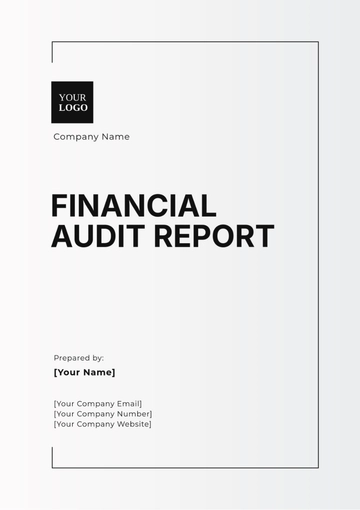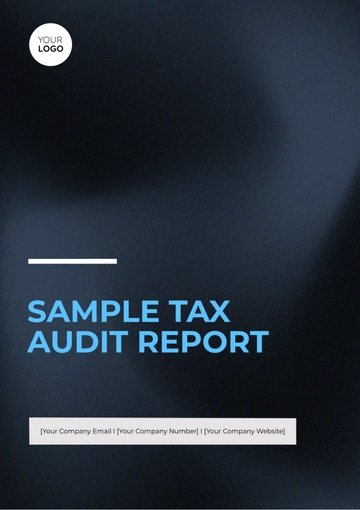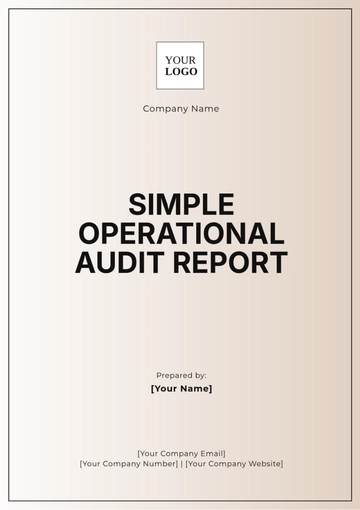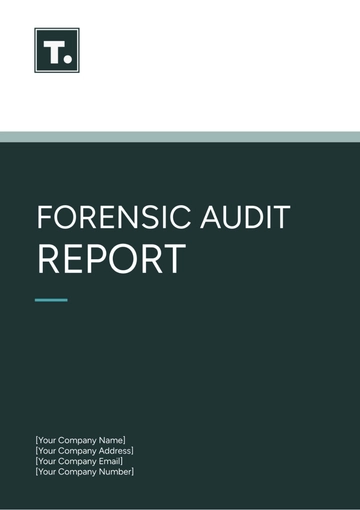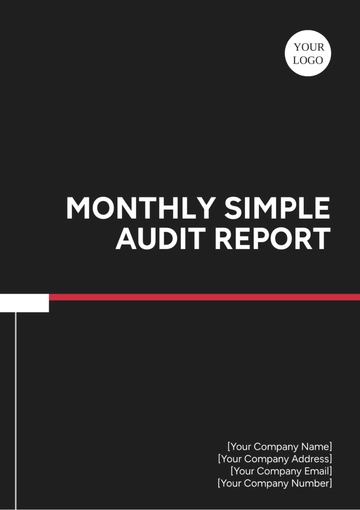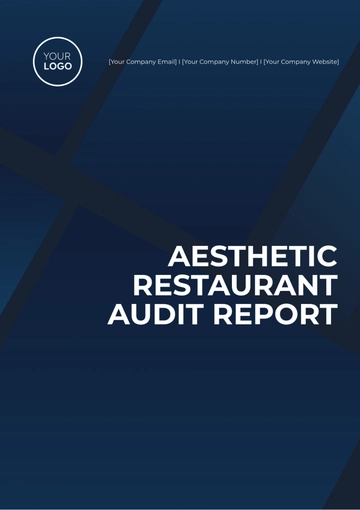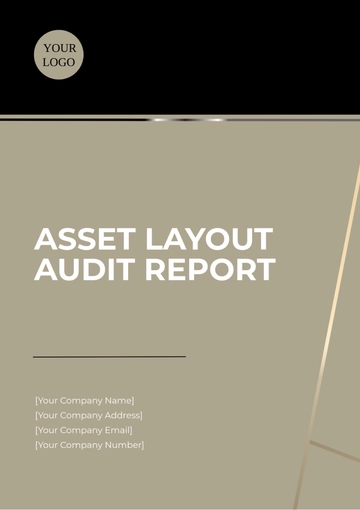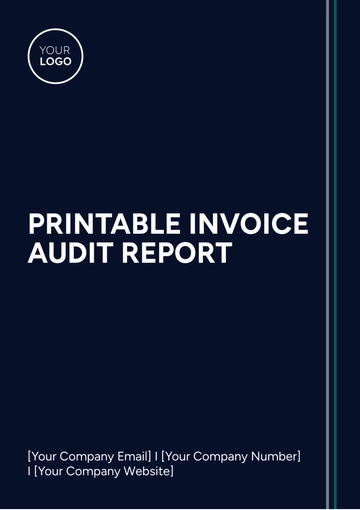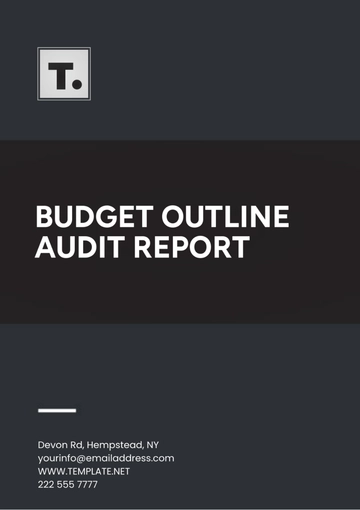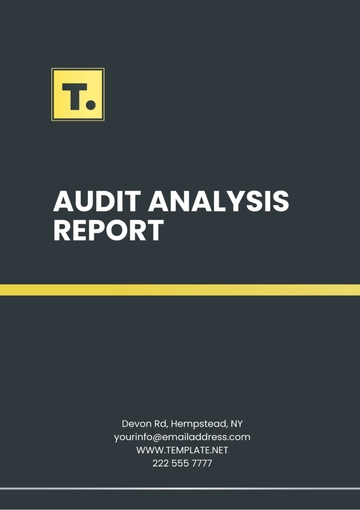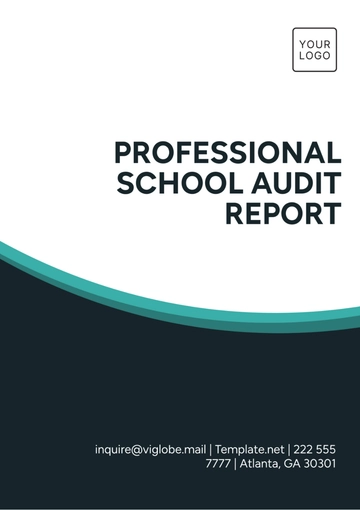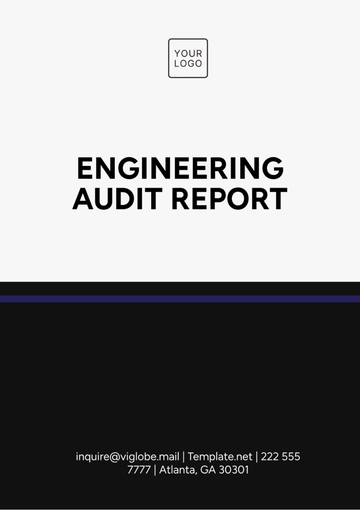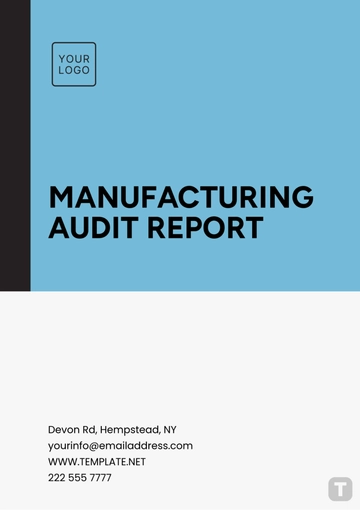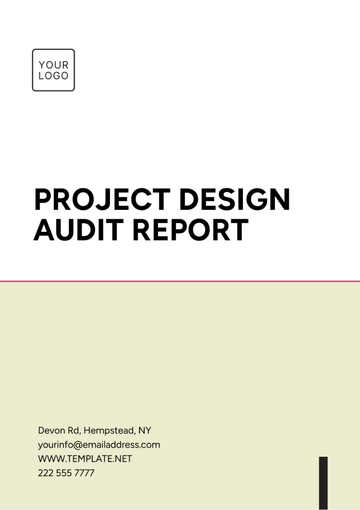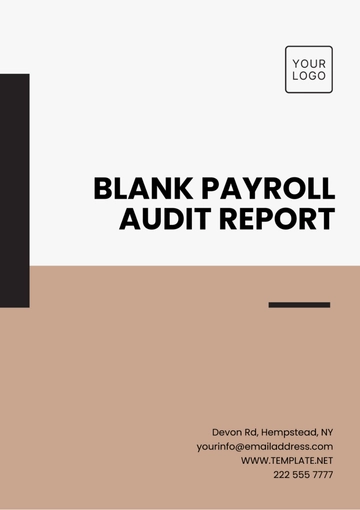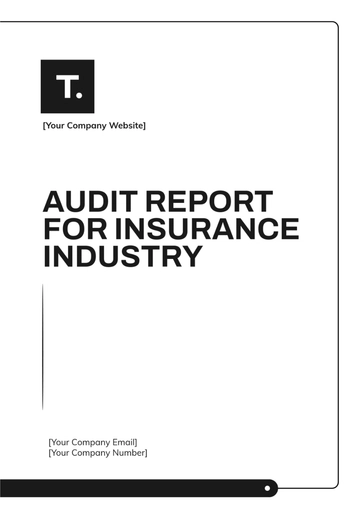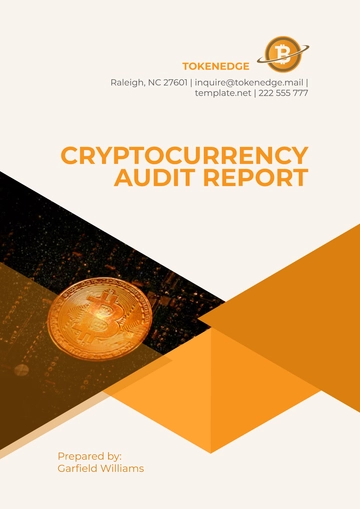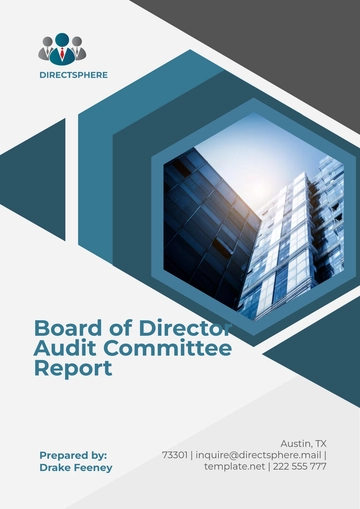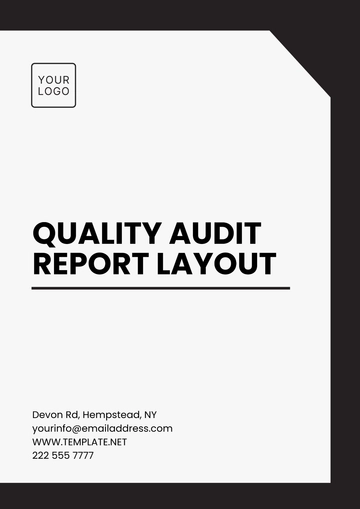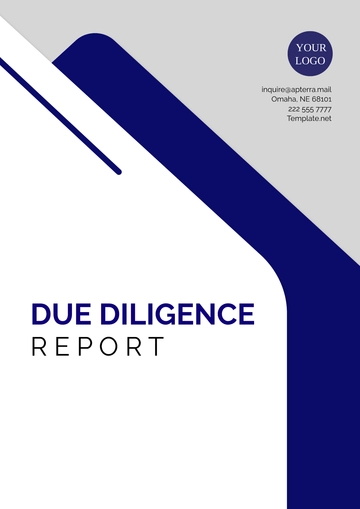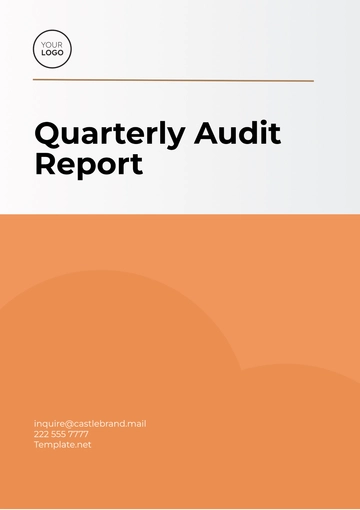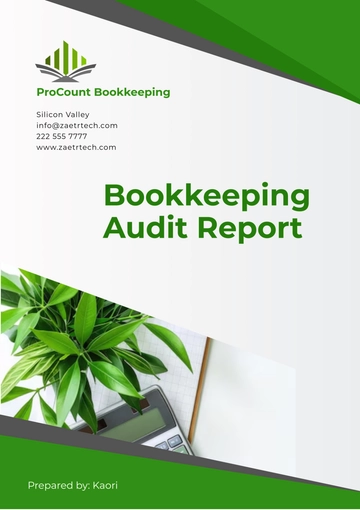Free Administration Compliance Audit Report
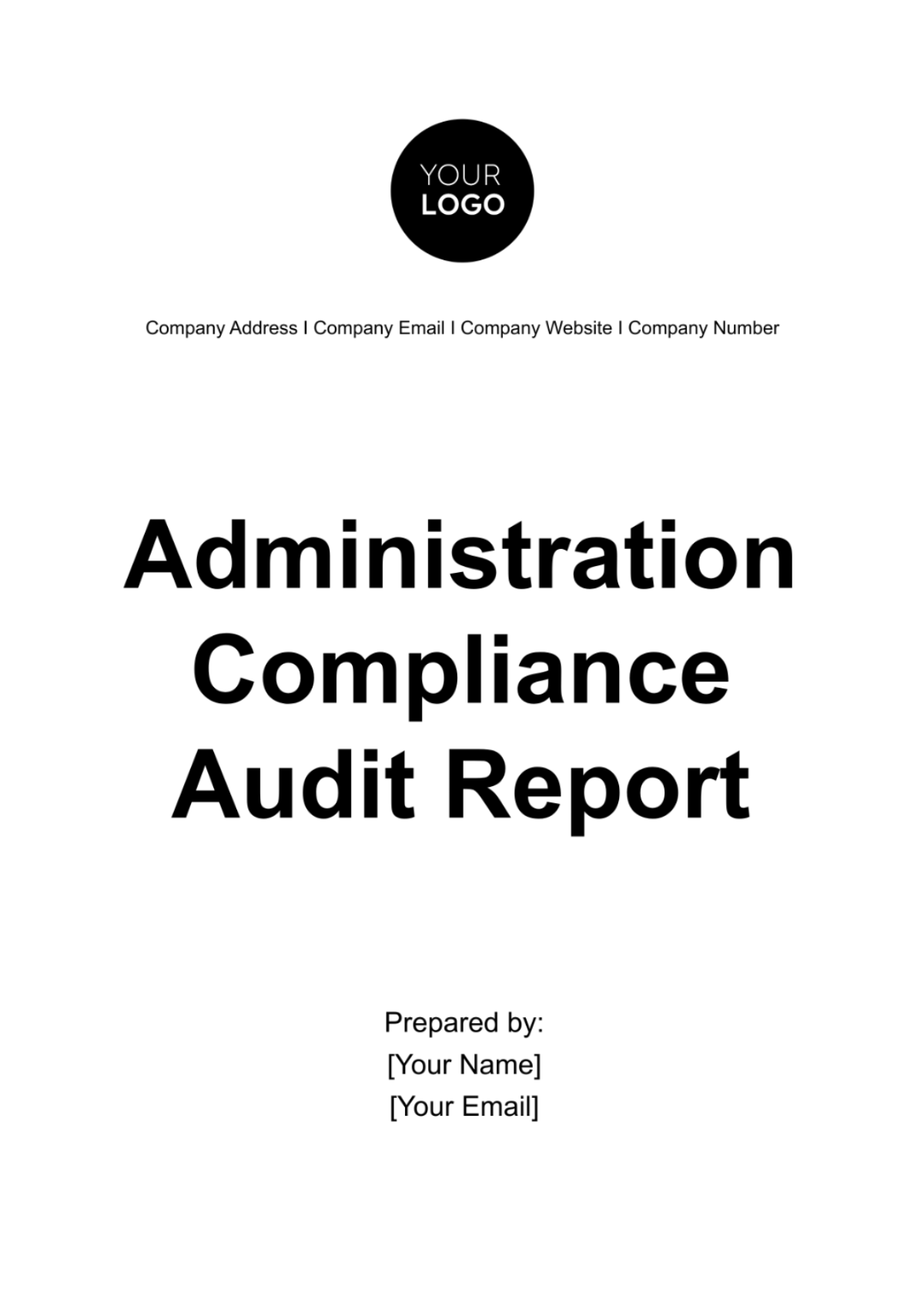
I. Executive Summary
This Administration Compliance Audit Report provides an overview of the findings from the audit conducted at [Your Company Name] to assess its adherence to administrative policies, procedures, and regulations. The audit aimed to evaluate the effectiveness of administrative controls and identify any areas of non-compliance. Key findings, recommendations for corrective actions, and an implementation plan are outlined to address the identified issues and enhance compliance.
II. Introduction
[Your Company Name] recognizes the importance of maintaining compliance with administrative requirements to ensure efficient operations and mitigate risks. This audit was conducted to assess the effectiveness of our administrative processes and identify opportunities for improvement. The audit covered various areas, including financial management, human resources practices, information technology systems, and legal compliance.
III. Scope of the Compliance Audit
The scope of this comprehensive compliance audit extends across all facets of [Your Company Name]'s administrative functions, aiming to scrutinize the adherence to internal policies, industry standards, and regulatory mandates. This audit encompasses a thorough examination of the following areas:
Financial Management: Evaluation of financial controls, budgeting processes, accounting practices, expenditure authorization, and financial reporting to ensure accuracy, transparency, and compliance with accounting standards and regulatory requirements.
Human Resources Practices: Assessment of recruitment processes, employee onboarding, performance management, training and development initiatives, compensation and benefits administration, employment contracts, and compliance with labor laws and regulations.
Information Technology Systems: Review of IT infrastructure, network security measures, data management practices, system access controls, software licensing, cybersecurity protocols, disaster recovery plans, and compliance with data protection regulations such as GDPR, CCPA, or other applicable laws.
Data Protection and Privacy: Examination of policies and procedures governing the collection, storage, processing, and sharing of personal and sensitive data, ensuring compliance with relevant data protection laws and regulations, including but not limited to GDPR, HIPAA, or other industry-specific requirements.
Legal Compliance: Analysis of contractual agreements, regulatory filings, permits and licenses, intellectual property protection measures, anti-bribery and corruption policies, and adherence to applicable laws and regulations governing the industry and geographic locations in which [Your Company Name] operates.
Ethical Standards and Corporate Governance: Assessment of corporate governance structures, codes of conduct, ethics policies, whistleblower mechanisms, conflict of interest disclosures, and adherence to ethical principles and industry best practices.
Internal Controls and Risk Management: Examination of internal control frameworks, risk assessment processes, fraud prevention measures, segregation of duties, internal audit functions, and compliance with COSO, COBIT, or other relevant frameworks to mitigate operational, financial, and compliance risks.
Supplier and Vendor Management: Review of supplier/vendor selection processes, contract management practices, due diligence procedures, compliance with contractual obligations, and risk management strategies to ensure alignment with [Your Company Name]'s standards and regulatory requirements.
Environmental, Health, and Safety (EHS) Compliance: Evaluation of environmental sustainability initiatives, workplace safety protocols, hazardous material handling procedures, emergency response plans, and compliance with environmental, health, and safety regulations to minimize environmental impact and ensure employee well-being.
Regulatory Compliance Monitoring: Continuous monitoring of changes in laws, regulations, and industry standards relevant to [Your Company Name]'s operations, ensuring timely updates to policies, procedures, and practices to maintain compliance and mitigate regulatory risks.
IV. Audit Methodology
The comprehensive audit methodology employed in this assessment encompasses a systematic and thorough approach to evaluating [Your Company Name]'s administrative processes, controls, and compliance measures. The methodology consists of the following key components:
Preparation Phase:
Review of relevant documentation, including policies, procedures, organizational charts, and prior audit reports, to understand the administrative framework and regulatory requirements.
Identification of key stakeholders, including management personnel, department heads, and compliance officers, to facilitate communication and coordination throughout the audit process.
Risk Assessment:
Conducting a comprehensive risk assessment to identify potential areas of non-compliance, operational vulnerabilities, and regulatory risks.
Prioritizing audit focus areas based on the significance of risks, regulatory requirements, and potential impact on [Your Company Name]'s operations and stakeholders.
Audit Planning:
Development of an audit plan outlining the objectives, scope, methodology, resource requirements, and timeline for the audit.
Allocation of audit resources, including personnel and technology tools, to ensure efficient and effective execution of the audit plan.
Data Collection and Analysis:
Gathering relevant data through document reviews, interviews with key personnel, and observation of administrative processes and practices.
Analyzing the collected data to assess compliance with internal policies, industry standards, and regulatory requirements, as well as identifying any deviations or areas of concern.
Testing and Evaluation:
Conducting testing procedures, such as sample testing, transaction testing, and system testing, to validate the effectiveness of administrative controls and identify any weaknesses or deficiencies.
Evaluating the design and operating effectiveness of internal controls to ensure they are adequately designed and consistently applied.
Root Cause Analysis:
Performing root cause analysis to identify the underlying factors contributing to any non-compliance issues or control deficiencies identified during the audit.
Understanding the root causes enables [Your Company Name] to develop targeted corrective actions to address the issues at their source.
Reporting and Communication:
Documenting audit findings, including compliance strengths, weaknesses, non-conformities, and opportunities for improvement, in a clear and concise manner.
Communicating audit results to key stakeholders, including management, audit committee, and regulatory authorities, as appropriate, to facilitate decision-making and remediation efforts.
Follow-Up and Monitoring:
Tracking the implementation of corrective actions and remediation plans to address identified issues and improve administrative compliance.
Conducting follow-up reviews and monitoring activities to ensure sustained compliance and continuous improvement over time.
V. Compliance Findings and Observations
During the audit, several areas of compliance strengths and weaknesses were identified. The compliance findings and observations from the audit of [Your Company Name]'s administrative processes are summarized in the table below:
Area | Compliance Findings | Observations |
|---|---|---|
Financial Management | Inadequate documentation of expenditure authorization processes, leading to instances of unauthorized spending and potential financial irregularities. | Lack of segregation of duties in financial transactions, increasing the risk of fraud and errors in financial reporting. |
Human Resources Practices | Inconsistencies in employee onboarding procedures, resulting in incomplete documentation and gaps in compliance with employment laws and regulations. | Limited training and development opportunities for employees, impacting job satisfaction and retention rates. |
Information Technology Systems | Outdated software systems and inadequate cybersecurity measures, exposing [Your Company Name] to potential data breaches and cyber threats. | Insufficient access controls and monitoring mechanisms for sensitive data, increasing the risk of unauthorized access and data leakage. |
Data Protection and Privacy | Lack of clear policies and procedures for data protection and privacy compliance, posing risks of non-compliance with data protection regulations. | Inadequate measures to secure personal and sensitive data, potentially compromising customer privacy and regulatory compliance. |
Legal Compliance | Failure to regularly update contractual agreements and regulatory filings, leading to potential breaches of contractual obligations and regulatory requirements. | Limited awareness of recent changes in laws and regulations, resulting in non-compliance with emerging regulatory requirements. |
Ethical Standards and Corporate Governance | Absence of a formal code of conduct and ethics training programs, increasing the risk of ethical misconduct and reputational damage. | Insufficient mechanisms for reporting ethics violations and addressing conflicts of interest, undermining corporate governance effectiveness. |
Internal Controls and Risk Management | Weaknesses in internal control frameworks, including inadequate segregation of duties and ineffective monitoring of key controls, increasing the risk of control failures. | Limited integration of risk management practices into decision-making processes, hampering [Your Company Name]'s ability to proactively identify and mitigate risks. |
Supplier and Vendor Management | Inadequate due diligence processes for supplier/vendor selection, exposing [Your Company Name] to risks of non-compliance and supplier-related disruptions. | Lack of contract management protocols and oversight mechanisms, leading to potential contractual disputes and performance issues. |
Environmental, Health, and Safety (EHS) Compliance | Insufficient workplace safety protocols and emergency response plans, compromising employee safety and regulatory compliance. | Limited environmental sustainability initiatives and monitoring of environmental impact, raising concerns about [Your Company Name]'s commitment to EHS compliance. |
Regulatory Compliance Monitoring | Ineffective mechanisms for monitoring and tracking changes in laws and regulations relevant to [Your Company Name]'s operations, resulting in a lack of timely updates to policies and procedures. | Limited resources allocated to regulatory compliance activities, hindering [Your Company Name]'s ability to stay abreast of evolving regulatory requirements. |
VI. Non-Conformities Identified
Financial Management:
Lack of documented expenditure authorization procedures, leading to instances of unauthorized spending and potential financial irregularities.
Human Resources Practices:
Inconsistencies in employee onboarding procedures, resulting in incomplete documentation and gaps in compliance with employment laws and regulations.
Information Technology Systems:
Outdated software systems and inadequate cybersecurity measures, exposing [Your Company Name] to potential data breaches and cyber threats.
Data Protection and Privacy:
Absence of clear policies and procedures for data protection and privacy compliance, posing risks of non-compliance with data protection regulations.
Legal Compliance:
Failure to regularly update contractual agreements and regulatory filings, leading to potential breaches of contractual obligations and regulatory requirements.
Ethical Standards and Corporate Governance:
Lack of a formal code of conduct and ethics training programs, increasing the risk of ethical misconduct and reputational damage.
Internal Controls and Risk Management:
Weaknesses in internal control frameworks, including inadequate segregation of duties and ineffective monitoring of key controls.
Supplier and Vendor Management:
Inadequate due diligence processes for supplier/vendor selection, exposing [Your Company Name] to risks of non-compliance and supplier-related disruptions.
Environmental, Health, and Safety (EHS) Compliance:
Insufficient workplace safety protocols and emergency response plans, compromising employee safety and regulatory compliance.
Regulatory Compliance Monitoring:
Ineffective mechanisms for monitoring and tracking changes in laws and regulations relevant to [Your Company Name]'s operations, resulting in a lack of timely updates to policies and procedures.
VII. Root Cause Analysis
A root cause analysis was conducted to identify the underlying factors contributing to the non-conformities identified during the audit of [Your Company Name]'s administrative processes. The analysis revealed the following root causes for the non-conformities:
Financial Management:
Inadequate documentation and communication of expenditure authorization procedures stem from a lack of clear guidelines and oversight mechanisms for financial transactions.
Human Resources Practices:
Inconsistencies in employee onboarding procedures are attributed to a lack of standardized processes and inadequate training for HR personnel responsible for onboarding activities.
Information Technology Systems:
Outdated software systems and inadequate cybersecurity measures result from limited investment in IT infrastructure upgrades and insufficient focus on cybersecurity risk management.
Data Protection and Privacy:
The absence of clear policies and procedures for data protection and privacy compliance is rooted in a lack of awareness and understanding of regulatory requirements among key stakeholders.
Legal Compliance:
Failure to regularly update contractual agreements and regulatory filings stems from inadequate monitoring of legal and regulatory changes and limited resources allocated to legal compliance activities.
Ethical Standards and Corporate Governance:
The lack of a formal code of conduct and ethics training programs is attributed to a lack of prioritization of ethics and governance initiatives within the organization.
Internal Controls and Risk Management:
Weaknesses in internal control frameworks result from a lack of emphasis on internal controls, inadequate training for control owners, and limited resources dedicated to risk management activities.
Supplier and Vendor Management:
Inadequate due diligence processes for supplier/vendor selection arise from a lack of standardized procedures and insufficient training for procurement personnel responsible for vendor management.
Environmental, Health, and Safety (EHS) Compliance:
Insufficient workplace safety protocols and emergency response plans result from a lack of EHS expertise, inadequate risk assessments, and limited resources allocated to EHS initiatives.
Regulatory Compliance Monitoring:
Ineffective mechanisms for monitoring and tracking changes in laws and regulations stem from a lack of dedicated resources, outdated compliance monitoring tools, and limited integration of compliance considerations into strategic planning processes.
VIII. Recommendations for Corrective Actions
Based on the findings and root cause analysis, the following recommendations are proposed to address the non-conformities and enhance compliance:
Implement regular audits and reviews of financial processes to ensure compliance with established policies and procedures, identify areas for improvement, and mitigate risks of financial irregularities.
Enhance IT infrastructure and cybersecurity measures by investing in updated software systems, implementing robust access controls, conducting regular vulnerability assessments, and providing cybersecurity training to employees.
Establish a comprehensive data protection and privacy program, including the development of privacy policies, data classification frameworks, data breach response plans, and regular privacy impact assessments.
Strengthen legal compliance efforts by establishing a centralized repository for tracking regulatory changes, conducting regular compliance assessments, and appointing a dedicated compliance officer responsible for monitoring regulatory requirements and ensuring adherence.
Implement a formal ethics and governance framework, including the adoption of a code of conduct, ethics training programs, whistleblower policies, and regular ethics assessments to promote ethical behavior and strengthen corporate governance.
Enhance risk management practices by conducting regular risk assessments, developing risk mitigation plans, and establishing key risk indicators to proactively identify and address emerging risks across the organization.
IX. Implementation Plan
The implementation plan outlines the steps and timelines for executing the recommended corrective actions to address the non-conformities identified during the audit of [Your Company Name]'s administrative processes.
A. Develop and Implement Updated Policies and Procedures
Action Item | Responsible Party | Timeline | Status |
|---|---|---|---|
Conduct a gap analysis of existing policies and procedures | Compliance Officer | Month 1-2 | In Progress |
Develop updated policies and procedures to address identified gaps | Compliance Team | Month 3-4 | Pending |
Review and approve updated policies and procedures | Management Team | Month 5-6 | Pending |
Distribute updated policies and procedures to relevant stakeholders | Compliance Officer | Month 7 | Pending |
Conduct training sessions to ensure understanding and compliance with new policies and procedures | HR Department | Month 8-9 | Pending |
B. Provide Training and Awareness Programs to Employees
Action Item | Responsible Party | Timeline | Status |
|---|---|---|---|
Identify training needs based on audit findings | HR Department | Month 1 | In Progress |
Develop training materials and programs | Training Department | Month 2-3 | Pending |
Schedule and conduct training sessions | Training Department | Month 4-5 | Pending |
Track attendance and completion of training | HR Department | Month 6-7 | Pending |
Conduct regular refresher training sessions | Training Department | Ongoing | Pending |
C. Strengthen Internal Monitoring and Oversight Mechanisms
Action Item | Responsible Party | Timeline | Status |
|---|---|---|---|
Review and update internal monitoring processes | Compliance Officer | Month 1-2 | In Progress |
Implement automated monitoring tools where feasible | IT Department | Month 3-4 | Pending |
Establish regular review meetings with department heads | Compliance Officer | Month 5-6 | Pending |
Develop a compliance dashboard for tracking key metrics | Compliance Officer | Month 7-8 | Pending |
Conduct periodic internal audits to assess compliance | Internal Audit Team | Ongoing | Pending |
D. Enhance Communication Channels
Action Item | Responsible Party | Timeline | Status |
|---|---|---|---|
Implement an anonymous reporting system for compliance concerns | Compliance Officer | Month 1-2 | Pending |
Establish regular communication channels for compliance updates | Compliance Officer | Ongoing | Pending |
Conduct town hall meetings to promote transparency and accountability | Management Team | Quarterly | Pending |
Encourage open-door policy for reporting compliance concerns | HR Department | Ongoing | Pending |
Develop an intranet portal for easy access to compliance resources | IT Department | Month 3-4 | Pending |
E. Implement Regular Audits and Reviews
Action Item | Responsible Party | Timeline | Status |
|---|---|---|---|
Develop audit schedule and plan for financial processes | Internal Audit Team | Month 1-2 | Pending |
Conduct regular audits of financial processes | Internal Audit Team | Ongoing | Pending |
Review and update audit procedures as needed | Compliance Officer | Ongoing | Pending |
Analyze audit findings and implement corrective actions | Management Team | Ongoing | Pending |
Monitor and track progress of audit recommendations | Compliance Officer | Ongoing | Pending |
F. Enhance IT Infrastructure and Cybersecurity Measures
Action Item | Responsible Party | Timeline | Status |
|---|---|---|---|
Conduct a comprehensive assessment of IT infrastructure and cybersecurity measures | IT Department | Month 1-2 | In Progress |
Develop a cybersecurity enhancement plan | IT Department | Month 3-4 | Pending |
Implement recommended cybersecurity measures | IT Department | Ongoing | Pending |
Conduct regular cybersecurity training for employees | IT Department | Ongoing | Pending |
Monitor and update IT infrastructure and cybersecurity measures regularly | IT Department | Ongoing | Pending |
X. Conclusion
In conclusion, this Administration Compliance Audit Report highlights the importance of maintaining compliance with administrative requirements to support [Your Company Name]'s objectives and protect its interests. By addressing the identified non-conformities and implementing the recommended corrective actions, [Your Company Name] can strengthen its administrative controls, mitigate risks, and foster a culture of compliance across the organization.
- 100% Customizable, free editor
- Access 1 Million+ Templates, photo’s & graphics
- Download or share as a template
- Click and replace photos, graphics, text, backgrounds
- Resize, crop, AI write & more
- Access advanced editor
Ensure regulatory adherence with Template.net's Administration Compliance Audit Report Template. This editable template, accessible through our AI Editor Tool, enhances reporting efficiency. Featuring customizable fields and structured formats, it empowers you to generate detailed audit reports, enabling thorough analysis of compliance status and identification of improvement opportunities in administrative practices.
You may also like
- Sales Report
- Daily Report
- Project Report
- Business Report
- Weekly Report
- Incident Report
- Annual Report
- Report Layout
- Report Design
- Progress Report
- Marketing Report
- Company Report
- Monthly Report
- Audit Report
- Status Report
- School Report
- Reports Hr
- Management Report
- Project Status Report
- Handover Report
- Health And Safety Report
- Restaurant Report
- Construction Report
- Research Report
- Evaluation Report
- Investigation Report
- Employee Report
- Advertising Report
- Weekly Status Report
- Project Management Report
- Finance Report
- Service Report
- Technical Report
- Meeting Report
- Quarterly Report
- Inspection Report
- Medical Report
- Test Report
- Summary Report
- Inventory Report
- Valuation Report
- Operations Report
- Payroll Report
- Training Report
- Job Report
- Case Report
- Performance Report
- Board Report
- Internal Audit Report
- Student Report
- Monthly Management Report
- Small Business Report
- Accident Report
- Call Center Report
- Activity Report
- IT and Software Report
- Internship Report
- Visit Report
- Product Report
- Book Report
- Property Report
- Recruitment Report
- University Report
- Event Report
- SEO Report
- Conference Report
- Narrative Report
- Nursing Home Report
- Preschool Report
- Call Report
- Customer Report
- Employee Incident Report
- Accomplishment Report
- Social Media Report
- Work From Home Report
- Security Report
- Damage Report
- Quality Report
- Internal Report
- Nurse Report
- Real Estate Report
- Hotel Report
- Equipment Report
- Credit Report
- Field Report
- Non Profit Report
- Maintenance Report
- News Report
- Survey Report
- Executive Report
- Law Firm Report
- Advertising Agency Report
- Interior Design Report
- Travel Agency Report
- Stock Report
- Salon Report
- Bug Report
- Workplace Report
- Action Report
- Investor Report
- Cleaning Services Report
- Consulting Report
- Freelancer Report
- Site Visit Report
- Trip Report
- Classroom Observation Report
- Vehicle Report
- Final Report
- Software Report

